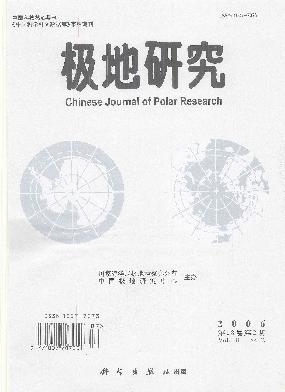Most glaciers in Svalbard are classified as sub-polar or polythermal.Long time series of mass balance investigations on Austre Br(?)ggerbreen and Midre Lovénbreen(<10km~2)show that summer ablation has been greater than winter accumulation nearly all observed years since the end of Little Ice Age,resulting in steady decreasing ice masses.However,those glaciers covering larger areas at higher altitudes,such as Kongsvegen(105km~2),are closer to steady- state balance than the small ones.The flow rate of Svalbard glaciers is generally low,but there exists frequent surging.Glacier length,bedrock lithology and polythermal regime are main con- trois on spatial distribution of surge-type glaciers.Information on the thermal regime of Svalbard glaciers can be obtained from their hydrological characteristics,temperature measurements in boreholes,and radio-echo sounding.The low flow velocities and the polythermal structure of the glaciers are important for drainage system on the glaciers.The four main sources for fresh- water run-off over whole archipelago are glacier ablation,snowmelt,summer rainfall and ice calving.Both empirical regression and modelling approaches could be used to calculate the a- mount of freshwater run-off.Proper dating of the early Svalbard ice cores has been hampered by a combination of melting producing ice layers,coarse sampling and limited analysis of chemical species,however,recent studies suggest that ice-core data from ice caps in Svalbard could still provide us with important climatic and environmental information.During glaciological expedi- tion around Chinese Yellow River station in 2005,the stakes for mass balance and surface flow investigations has been set up on Austre Lovénbreen and Pedersenbreen.It is planned that tem- perature measurements in boreholes,meteorological and hydrological observations,and thick- ness and internal structure soundings will be carried out on Austre Lovénbreen.The following studies of Svalbard glaciers will be conducted:main characteristics and conditions,surface en- ergy and mass balance,glacier fluctuations and its relations with climate,interannual and sea- sonal variations in freshwater run-off,and interaction processes between atmosphere,snow and ice interfaces.

